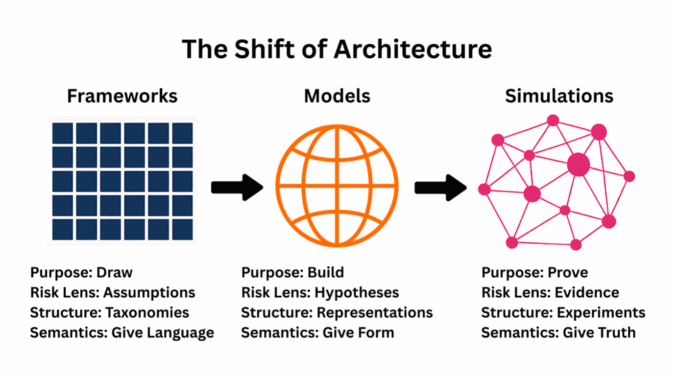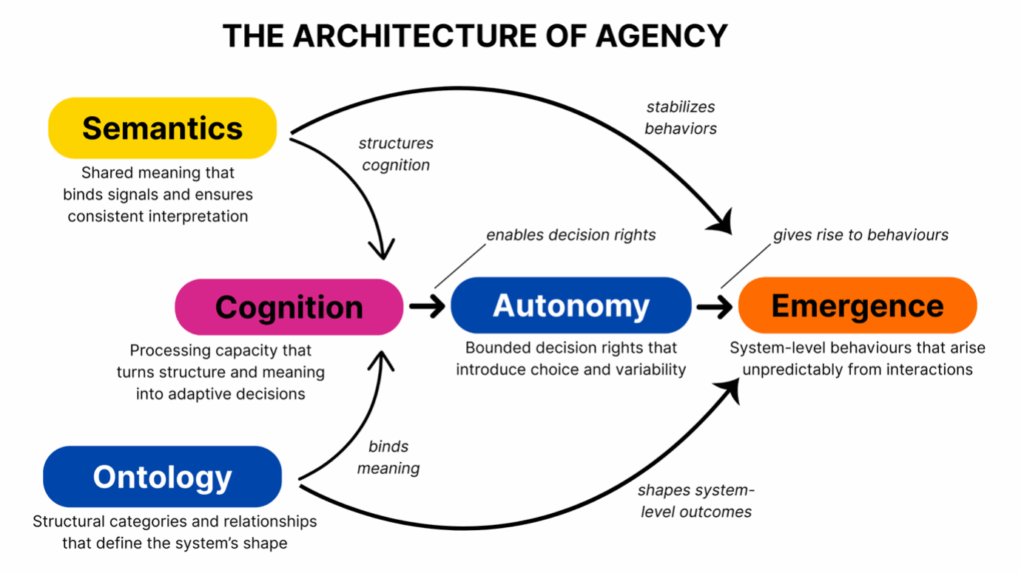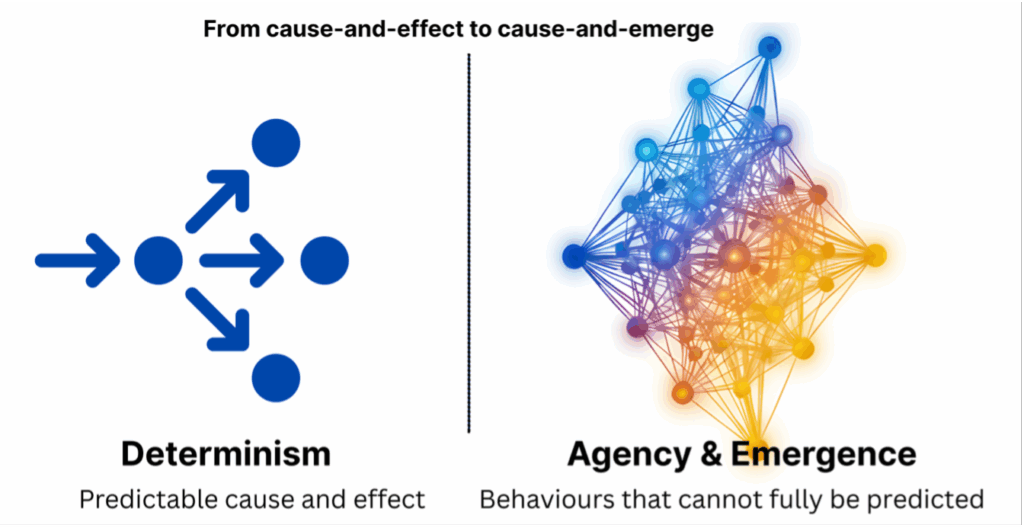
(Editor’s Note: This article is based on a workshop that will be held on September 9. Readers can sign up for free for the workshop here.)
Crossing the Threshold of Scale
AI has crossed a threshold. What began as copilots that sat politely on the side of human workflows is now turning into something much more profound. We are building systems that perceive, decide, and act with a degree of autonomy. These are not tools waiting for instruction; they are actors within bounded domains of authority.
The question that now dominates is simple to pose yet difficult to solve: How do we scale when behaviour cannot be fully predicted in advance?
Traditional software design assumed traceability from input to output, with every behaviour designed or tested in advance. In an agentic system, behaviour emerges from interactions, and those interactions multiply with scale. Architects have always been the stewards of scale. The agentic world only intensifies that role.
The Language of Agency
Every great shift in computing has been accompanied by a new vocabulary. Client–server brought the language of requests, responses, and connections. Object-orientation introduced inheritance, encapsulation, and polymorphism. Service-oriented architecture gave us contracts, registries, and orchestration.
The move to cloud computing forced everyone to think in terms of elasticity, tenancy, and platforms. Each shift started as terminology, but the language soon became the scaffolding that allowed the discipline to evolve.
The agentic shift is no different. Its lexicon is already taking shape:
- Autonomy defines the bounded decision rights that agents hold.
- Emergence names the behaviours that arise once multiple agents interact.
- Cognition describes the ability of an agent to process, adapt, and improve.
- Ontology and semantics provide the grammar that gives agents shared meaning, so that signals are not just data but facts with intent attached.
These words are the minimum vocabulary for architecture and design in this new landscape.

The Architecture of Agency — how semantics and ontology ground cognition, enabling autonomy, leading to emergence.
Architects must claim this language before others dilute it. If the lexicon is left to technologists focused only on model training, or to product teams focused only on feature delivery, design will fracture. Only architecture has the cross-domain view that can turn new words into a system grammar. The lexicon is more than labels; it is the bridge between concepts and execution.
Beyond Blueprints: Living Models and Simulation-First Design
Frameworks have long been the architect’s stock in trade. They impose order on complexity by giving categories, layers, and patterns. Frameworks are powerful for alignment and communication, but they are also static. They represent intent at a point in time, not living behaviour at runtime. That limitation becomes fatal when behaviour is not just complex but adaptive.
Models take us a step further. A model is more than a drawing; it is a living representation of entities, relationships, constraints, and flows. A model can be executed, validated, and adapted. It can tell a story of how signals pass through a system, how rules bind to events, and how data shapes decisions. Unlike a framework, a model breathes.
Even then, a model remains a hypothesis until it is put under pressure. That is the purpose of simulation. Simulations let us see what happens when dozens or hundreds of agents interact under load, with incomplete data, with conflicting goals, or with changing environments. They expose oscillations, deadlocks, cascades, and coordination failures. They reveal what cannot be seen in diagrams or specifications.
The distinction can be captured clearly:
| Stage | What It Is | Strength | Limitation |
| Frameworks | Static blueprints, categories, layers | Clarity, orientation, alignment | Cannot capture runtime behaviour |
| Models | Living representations of structure and flow | Adaptive, executable, open to revision | Still hypothetical until stressed |
| Simulations | Dynamic environments to test agents under load | Reveals emergence, validates behaviour before release | Requires discipline and system-wide scaffolding |
The future of architecture lies in this sequence. Frameworks remain useful as orienting devices. Models turn those frameworks into living representations. Simulations stress those models until truth appears. An architect who only writes frameworks is already behind. An architect who models is relevant. An architect who simulates is indispensable.
When Predictability Breaks: From Control to Emergence
For most of the history of computing, systems were deterministic. You could trace a line from input to output and know, with certainty, what would happen. Governance followed the same pattern. Oversight was about procedures. Compliance was about documentation. Risk was managed through static controls and retrospective checks. Determinism gave us predictability, and predictability made governance possible.
That world is already behind us. As autonomy spreads into software, decision rights are no longer held only by people. They are embedded in agents that perceive, decide, and act within bounded authority. This autonomy produces a new kind of behaviour. An agent may follow every rule correctly yet still surprise us with outputs that were not explicitly designed. Inside each agent, micro-emergence appears.
The real shift comes when multiple autonomous agents interact. Micro-emergence compounds into system-level emergence. Cascades of actions ripple across networks. Oscillations appear as agents respond to each other without stabilising feedback. Coordination failures multiply, not linearly but exponentially. The more agents we add, the less predictable the system becomes. What was once a manageable risk curve becomes a steep and unforgiving slope.

Crossing the Threshold of Scale — where determinism ends and emergence begins.
This is why emergence is both the promise and the peril of the agentic age. Emergence can reveal new forms of intelligence, new optimisations, and new value creation. Yet it can also expose us to collapse, instability, and systemic risk. Architecture must evolve precisely because emergence cannot be designed away; it must be anticipated, simulated, and governed.
Architects as Orchestrators of the Agentic Age
Architects have always been translators between domains. They span business intent, application logic, data design, and technology platforms. They are trained to think in terms of boundaries, interfaces, and systems of systems. In the agentic age, that perspective is exactly what is required.
No single team owns the whole of an agentic system. Data scientists build models. Engineers build runtime platforms. Product teams chase features. Without architecture, the result is fragmented. With architecture, the result can be coherent. Only architects can design the ontological scaffolding, embed semantics across boundaries, and ensure that governance flows through runtime rather than being bolted on afterward.
The agentic shift does not reduce the role of architects; it magnifies it. Their vantage point is what turns isolated agents into orchestrated systems. Their skill in abstraction is what turns simulation results into design decisions. Their authority across layers is what makes safe scale possible.
Laying the Groundwork for Safe Scale
What does a solid foundation look like in practice? Four conditions stand out:
- Semantic and ontological consistency across agents.
- Policy carried as data, bound to every event in real time.
- Traceability designed into the backbone, so every action has provenance and explanation.
- Simulation-first validation to expose emergent risks before release.
These are the hallmarks of systems that can sustain agentic scale.
The anti-patterns are equally clear:
- Static frameworks without living models.
- Governance added as an afterthought.
- Semantics treated as a niche concern rather than the grammar of the system.
These foundations may hold briefly, but they cannot endure. Architects who neglect foundations will face collapse; those who prioritise them will unlock advantage.
The Architect’s Next Identity
The path is visible. Architects must shift from being framework writers to being model builders, and from being model builders to being simulation orchestrators. Their craft must evolve, but the essence of architecture remains the same: making complexity legible, designing for scale, and ensuring that systems hold under stress.
The agentic challenge is enormous. So too is the opportunity. New forms of intelligence, new ecosystems, and new value chains will emerge for those who can model, simulate, and govern before releasing to the world. The future belongs to the architects who accept this challenge. The path is open; it is time to walk it.
Jesper Lowgren is a leading voice in enterprise architecture and the emerging discipline of agentic AI. He develops frameworks and methods that help business and technology leaders design, govern, and scale intelligent systems where autonomy and emergence reshape risk and opportunity.
